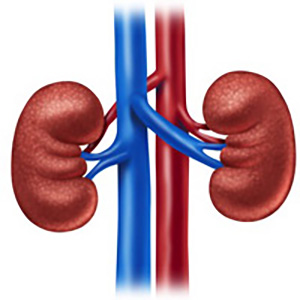 Smart Citations
Smart CitationsSee how this article has been cited at scite.ai
scite shows how a scientific paper has been cited by providing the context of the citation, a classification describing whether it supports, mentions, or contrasts the cited claim, and a label indicating in which section the citation was made.
Goldfinger bypassing and en bloc stapling without dissection of renal vessels during laparoscopic nephrectomy
Objective: To test the employment of the Goldfinger Dissector (GD) to bypass and en bloc stapling of renal hilus without vascular dissection. Thus far no study has experimented the use of this integrated technique.
Patients and methods: From July 2002 to October 2020, clinical data were collected from 288 patients who underwent transperitoneal laparoscopic nephrectomies. They were divided into two groups: using GD with en bloc stapling (n = 174, group I) or the separation and ligation method (n = 114, group II) using the same Endo GIA Universal (Vascular) Stapler. Comparative analysis was carried out between the two groups, examining blood loss, operative time, intra and postoperative complications and hospital stay.
Results: The mean age was 58.3 and 55.1 years in group I and II, respectively. Ratio of 90/84 and 55/59 males/females was found in group I and II, respectively.Blood loss was 65.5 ml and 188.9 ml, operative time was 156.5 and 189.2 minutes, wound infection occurred in three patients in each group (1.7% and 2.6%), ileus in 4 (2.3%) and 1 (0.87%), atrial fibrillation in 1 (0.57%) and 0%, incisional hernia in 0 (0%) and 2 (1.75%), deep vein thrombosis (DVT) in 0 (0%) and 1 (0.87%), conversion to open surgery in 2 (1.15%) and 5 (4.39%), mean hospital stay 3.5 days and 4 days in group I and II, respectively.
Conclusions: Routine use of the GD and en bloc stapling of the renal pedicle in laparoscopic nephrectomy is safe and useful. This technique can decrease blood loss, operative time, and have some benefit in conversion to open surgery.
How to Cite

This work is licensed under a Creative Commons Attribution-NonCommercial 4.0 International License.
PAGEPress has chosen to apply the Creative Commons Attribution NonCommercial 4.0 International License (CC BY-NC 4.0) to all manuscripts to be published.

 https://doi.org/10.4081/aiua.2022.4.380
https://doi.org/10.4081/aiua.2022.4.380




